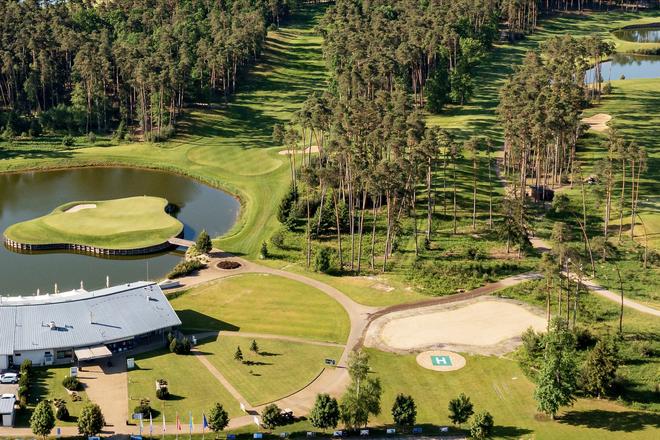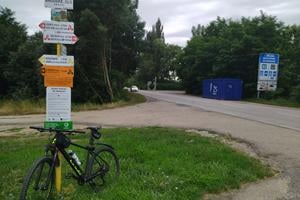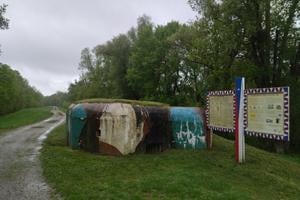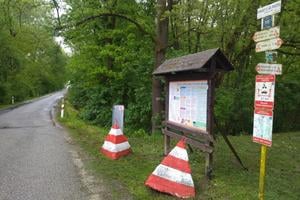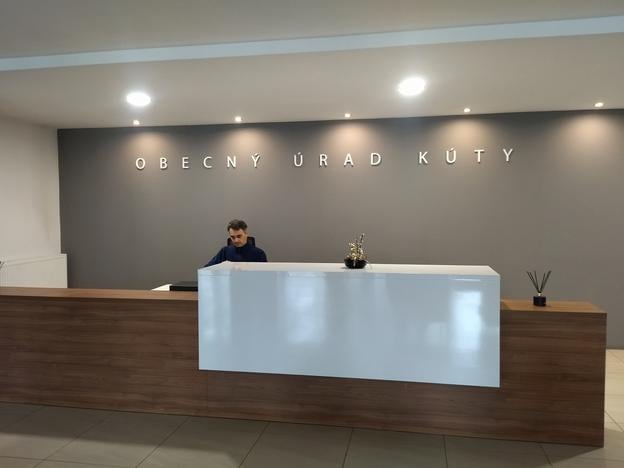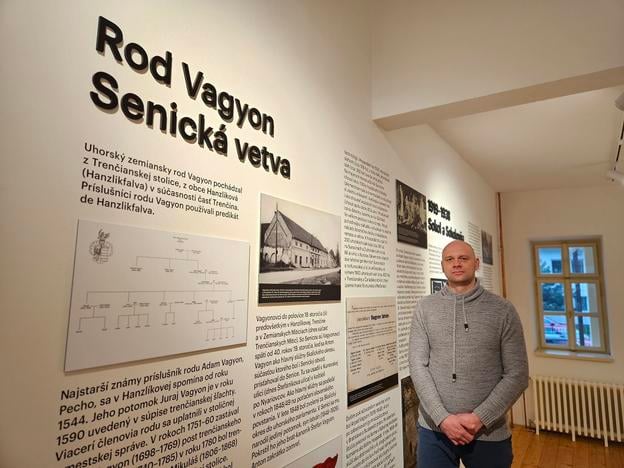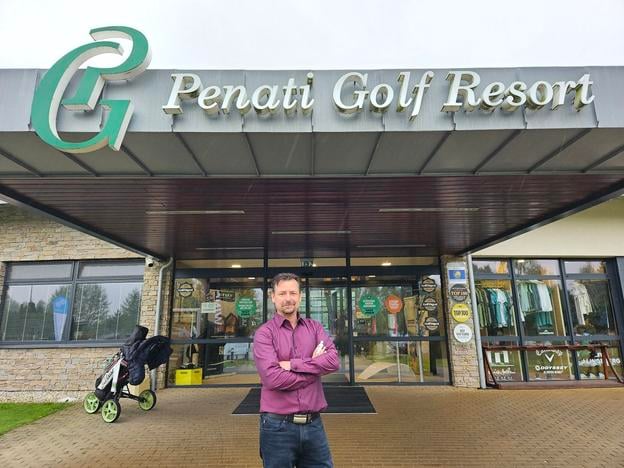You can read this exclusive content thanks to the FALATH & PARTNERS law firm, which assists American people with Slovak roots in obtaining Slovak citizenship and reconnecting them with the land of their ancestors.
The village of Kúty is situated in the western part of Slovakia, near the borders with the Czech Republic and Austria. However, its location is not a disadvantage.
“We are not on the outskirts or in a corner; we are in the centre of a prosperous region. If you hold a compass in your hand, you’ll find that within a 30-kilometre radius, we have Malacky, Skalica, Senica, the Austrian town of Hohenau, and the Czech town of Břeclav. A bit further away are Bratislava and Brno,” explains Branislav Vávra, the mayor of Kúty.
The name "Kúty" is derived from its position at the confluence of the Morava and Myjava rivers, as well as at the borders of three countries. In terms of transportation, Kúty serves as an important railway and road junction, with international express trains connecting Prague to Budapest.
From Kúty, you can quickly reach the district town of Malacky, whether by highway or by train, in just half an hour. Kúty belongs to the Senica district, which is also only half an hour away by car.
Cemeteries in Senica district
For many foreigners tracing their Slovak heritage, finding the burial sites of their ancestors is a deeply personal journey. To aid in this quest, we have provided maps of the districts we visited, with every cemetery carefully marked. Here you can find cemeteries in Senica district.
This is why the mayor plans to revitalise the parking lot in front of the railway station. The new lot is intended to accommodate 110 cars to handle the increasing number of passengers transferring from cars to trains. He also intends to use European funds for this project.
Despite its seemingly remote location, people are moving to Kúty, particularly those who work in factories in Malacky and are seeking more affordable rental housing. As a result, the population of Kúty is not declining and the village remains one of the larger villages in the Záhorie region, with more than 4,000 inhabitants.
Hotel-like municipal office
Right next to the municipal office is the restaurant U Cugú, which is busy at lunchtime. It operates with a self-service tray system, but the bean soup is delicious and thick. Coffee from the coffee machine is complimentary with the meal, although it doesn’t have a strong coffee flavour.
The municipal office, while unplastered, is quite large. The entrance hall surprises the reporter from The Slovak Spectator; it resembles the reception area of a quality hotel. There’s even a receptionist who directs us to the mayor’s office on the first floor.
Mayor Vávra explains that he established the reception area to enhance the efficiency of handling inquiries at the office. “Not everyone knows where to go within the office to obtain documents or handle other matters. We help direct them,” he adds with a smile.
The entire municipal office is currently undergoing reconstruction. “The facade isn’t finished yet; we are awaiting further calls for EU funding to repair the roof and then the facade,” explains Vávra. He also shows us a lovely wedding hall and a spacious courtyard behind the office, which is used for cultural and social events in the municipality.
In Kúty, construction and renovation projects are primarily funded by the EU. Vávra acknowledges that aligning with European projects cause significant challenges, and the payment process is slow. “We are slower than the Czechs, which is evident in their tourist and cycling infrastructure,” admits the mayor.
Cyclists are welcome
Cyclists are increasingly coming to visit Kúty as it serves as a hub for cycling trips along the Morava River and further into Záhorie along the Myjava River. However, they are facing challenges due to the closure of the bridge over the Morava River from Brodské to Lanžhot, which is currently under reconstruction.
"We are very disappointed because we have been aware of its poor condition for years, and suddenly it was closed," says the mayor. Neither pedestrians nor cyclists can cross the bridge. They now have to detour via the bicycle bridge near Kopčany, a village 15 kilometres away.
"A new bicycle bridge or a partly open old bridge that is accessible to cyclists and pedestrians would greatly benefit us," the mayor adds. The municipality also plans to improve local roads by adding cycle lanes, allowing tourists to access the Morava River embankment from the village. The estimated cost of this project is around half a million euros.
Visitors can explore the village of Kúty in a single day, as there aren't many historical monuments to see. The benefit of Kúty, however, is in serving as a central point for further excursions to the surrounding area, which is perfect for activities such as fishing, swimming in the Adamovské Lakes, and mushroom picking.
Additionally, the village is renovating an old building into a hostel that will accommodate 30 people and include a fitness centre. "Tourists will be able to stay and dine here, which will also benefit local entrepreneurs," explains Vávra regarding the upcoming plans.
Old Senica vanished along with the Jewish community
The district town of Senica has very few historical monuments left, as much of its historic centre was demolished during the communist era.
One notable victim of this demolition was the local Jewish synagogue. In the 19th century, Jews comprised a third of Senica's population. Their presence transformed Senica into a vibrant craft and merchant town situated at the crossroads of trade routes, particularly to the Czech lands, earning it the nickname the Czech Road.
Historical names of towns and villages in Senica district
Slovakia's territory has been part of different monarchies throughout history, including the Austro-Hungarian Empire from 1867 until 1918. Until 1992, with the exception of the inter-war years 1939-1945 during which the Nazi-aligned Slovak state existed, the territory was a part of Czechoslovakia. As a result of being a part of the Empire, the current names of Slovak municipalities are different than during that era.
Here's a list of the largest municipalities in Senica district with their historical names stated in the brackets:
Borský Mikuláš (Búrszentmiklós)
Borský Svätý Jur (Búrszentgyörgy)
Jablonica (Jablánc)
Čary (Csári)
Kúty (Jókút)
Senica (Szenice)
Moravský Svätý Ján (Morvaszentjános)
Sekule (Székelyfalva)
Smrdáky (Büdöskő)
Sobotište (Ószombat)
Šaštín-Stráže (Sasvár)
Šajdíkove Humence (Királymajor)
Štefanov (Csépányfalva)
The full list of all Slovak municipalities, including their historical names, can be found at www.geni.sk (in Slovak only).
Tomáš Motus, the curator of the Senica Museum, presents a large model of the town, providing a glimpse of what it once looked like. Since the 1960s, many old houses have been replaced by apartment buildings and modern shops, driven by the demand for affordable housing as factory jobs surged. During this time, nearly 10,000 people migrated to Senica from rural areas. Today, the town is still surrounded by numerous industrial plants.
Among the old manor houses and noble mansions that once existed in Senica, only one remains. This building now houses the city museum, which underwent renovation in 2020. The manor house, originally a summer residence from the late 19th century, belonged to a local landowner named István Vagyon.
After the Vagyon family relocated to Hungary in the 1920s, the manor house served as the Sokol association’s headquarters, and it has since been known as Sokolovňa. Besides sports, cultural events were also held there.
The Sokol members primarily consisted of Evangelical Slovaks and Czechs, who were forced to leave Slovakia during World War II. The building was subsequently taken over by the Hlinka Guard, a military organisation involved in the deportations of Jews. “Ironically, after the war, trials of those who collaborated with fascism were also held in this building,” Motus points out.
The exhibition at the Senica Museum is modern and interactive. During a visit from the Slovak Spectator, there was a special exhibition commemorating the 80th anniversary of the end of the Second World War.
“Temporary exhibitions are the most popular among local visitors. Tourists from abroad, including descendants of Jews, come to explore history, and we even had a relative of the Vagyon family visit from Hungary,” says Motus. Many visitors to the museum also come from the neighbouring Czech Republic.
Golf among pine trees and dunes
After passing through the village of Šajdíkove Humence, visitors can turn off between the fields and head toward the pine forests characteristic of the Záhorie region. The Penati Golf Resort is located there. Suddenly, houses and apartments appear along the road, with signs advertising luxury housing. We continue toward the golf club, where, despite the drizzling rain, we notice numerous golfers in the parking lot and in the restaurant.
“We have a tournament here today, so it’s quite busy,” explains Radomír Holečka, the director of the Penati Golf Resort. The resort, located near Šajdíkove Humence, offers two 18-hole courses spread over 217 hectares. It is the largest golf course in Slovakia and was built in 2012 on sand dunes. The owners chose this location because of the consolidated lands available.
According to Holečka, the resort attracts golfers not only because of its well-designed courses but also due to its natural surroundings. The presence of pine forests in the area is particularly appealing to foreign golfers. Alongside Slovaks, Czech golfers frequently visit Šajdíkove Humence, and in recent years, they have also drawn interest from Austrian golfers.
“They are discerning clients, but they come here mainly for the tranquility and the pine forests. Additionally, they appreciate the change of scenery since golfers often seek new courses,” adds Holečka.
There are private apartments available for rent in the area surrounding the resort, allowing guests to extend their stays. “In the past, we only had 10 beds in the resort, and guests had to sleep in Senica or Skalica. Now, we have eight of our own apartments,” the resort manager explains. Domestic golfers have also transformed their original weekend cottages into year-round homes because they feel comfortable here.
To retain guests, the resort offers various activities aside from golf. “You can play paddle tennis, paddle board on the nearby lakes, fish, and cycle. This is why golfers often spend five days at the resort rather than just the weekend,” says Holečka.
He also reveals plans for further development. “We plan to add a hotel section with a wellness center next to the restaurant.” For many golfers, wellness facilities are an integral part of the golf experience and could attract even more visitors.


